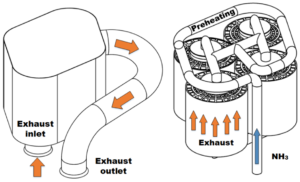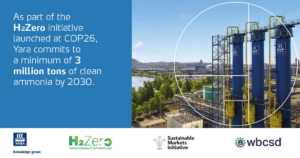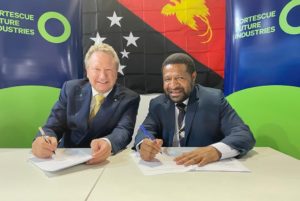Global
Ammonia combustion analysis: powertrains, turbines & power generation
This week we explore four updates in ammonia combustion R&D:
1. A team from the University of Cambridge has shown merchant vessels are the strongest candidates for conversion to run on ammonia powertrains, with cargo capacity losses of 4-9% able to be feasibly offset by operators.
2. Researchers at the University of Minnesota have successfully tested a thermochemical recuperation (TCR) reactor to improve the efficiency of a dual-fuel, diesel-ammonia compression ignition engine by minimising ammonia slip.
3. A global team led by Cardiff University researchers has revealed some of the inner workings of ammonia combustion in gas turbine flames.
4. A global team has produced a cradle-to-gate environmental assessment for ammonia production and ammonia-based electricity generation, suggesting that renewable and nuclear ammonia have a significant role to play in decarbonising the power sector.
H2Zero launches at COP26
A group of 28 global organisations (H2Zero) announced significant new pledges to drive the development of the global hydrogen industry at COP26 last week. On the supply side, the pledges add up to 18 million tonnes per year "lower carbon" hydrogen landing in global markets, displacing fossil hydrogen, conventional transport fuel and natural gas for industrial heating applications. On the demand side (including the use of lower carbon hydrogen for fertiliser, chemicals and explosives production), the pledges add up to 1.6 million tonnes. Of particular interest is Yara's pledge to source &/or produce at least 3 million tonnes of reduced carbon ammonia by 2030.
Fortescue Future Industries powers ahead on green ammonia
Fortescue Future Industries has been hitting the Ammonia Energy headlines of late. All of these various announcements point towards a singular target, announced in June by Fortescue Chairman Andrew Forrest: the supply of 15 million tonnes green hydrogen to global markets by 2030. Taken on their own these are significant steps, but COP26 was also the stage for a number of other significant ammonia and hydrogen-related announcements by FFI. Over the last fortnight we've seen the launch of green ammonia production projects in Papua New Guinea, Jordan & Argentina, buyers announced for a full 10% of FFI's global green hydrogen production, a partnership to decarbonise aviation and more developments in the electrolyser space.









